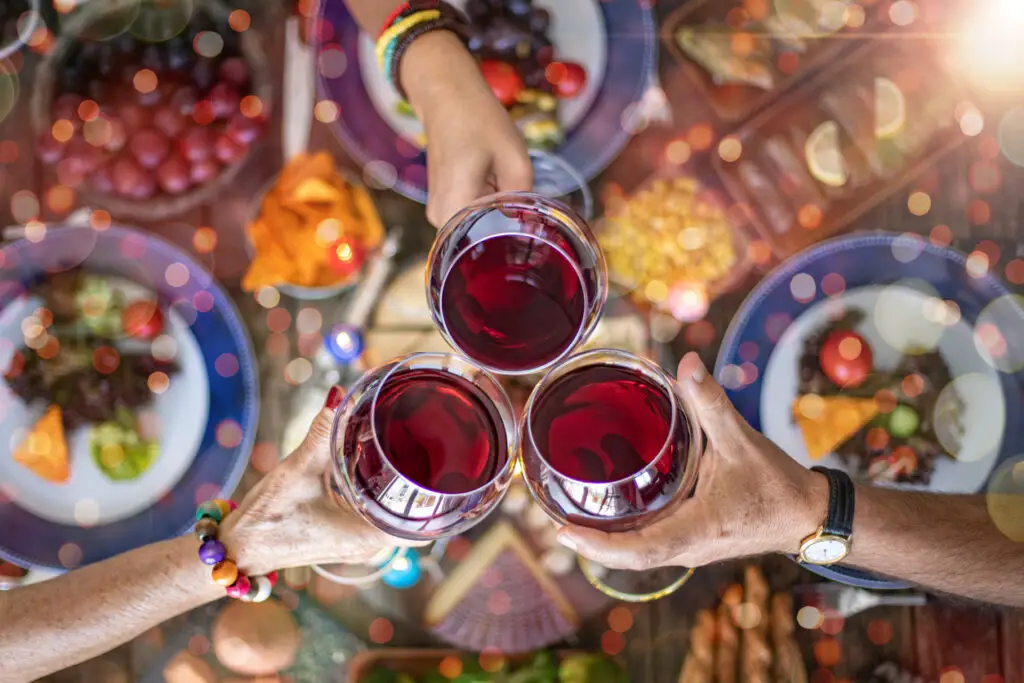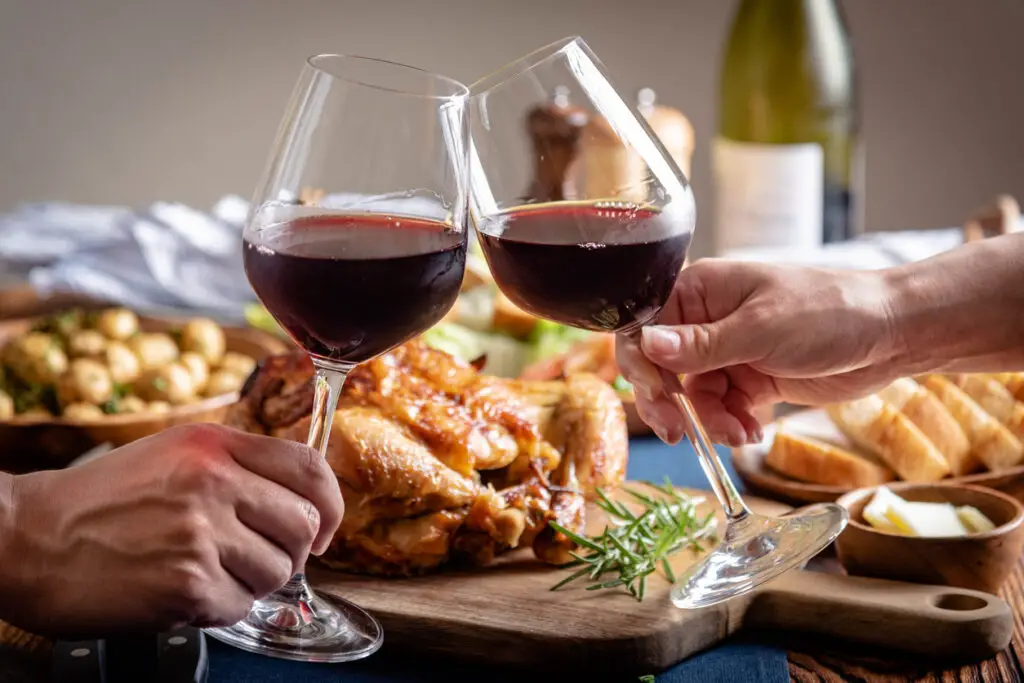We find exceptional food and wine pairings that are carefully selected by expert chefs and sommeliers all the time. It seems as if it is put on a pedestal and honored as a skill by an artist. While there is some truth in that pairing food and wine doesn’t have to be so dramatic. If we use the options presented by the experts and learn what is behind their choices it doesn’t seem so foreign. So what are the top food and wine pairing rules?
When your head is swirling trying to distinguish all the types of wine, storing, and serving methods it may seem like the last thing you want to do is figure out how to match a wine with food.
Don’t overwhelm yourself. Start with a few basic guidelines and build them into your dining experience as you see fit. It should all be about enjoyment, correct?
We have put together eight food and wine pair rules to guide you in the right direction.
Ultimately it comes down to drink and eating what you like best and we hope these tips help you get the most out of your overall dining experience.
1. Look for Versatile Wines
When you are starting out an easy trick is to choose versatile wines. Many wines like Riesling or Pinot Noir are suited for many styles of cuisine.
Having an easy-going wine takes the pressure off and prevents you from being pigeonholed into one type of dish.
Flexible wines will have fresh fruit, zesty acidity, and calm tannins. Gamay, Barbera, and Chenin Blanc all fall into this category.
An added benefit to this type of wine is that they typically do well without food. It makes for an easy transition from pre-dinner drinks to the main course.
2. It Is All About the Sauce or Seasoning

Author Note: The old adage that white wine is for fish and red wine is for meat needs a little dusting off. We think the best place to start when choosing a wine to match a particular dish is to look at its dominant ingredients.
Fish on its own is typically light and fresh. When a heavy cream sauce with tons of herbs is added the taste that fills your mouth is completely different.
If you focus on the dominant flavors and characteristics of a dish rather than the type of meat (or veg), you have a stronger platform to base your wine choice on.
3. Match Food and Wine with the Same Intensity
Consider food and wine pairings a balancing act. Match bold full-bodied wines with rich hearty meals and light wines with delicate dishes to create harmony.
Think of background music in a movie. Played too loud you will not hear the actors speaking yet the complete absence of music makes a scene less emotional.
Similarly, food will impact the way wines taste. Heavy food will drown a dainty wine making it taste bland and flat. You will not be able to taste a Pinot Gris under a T-bone steak.
The opposite is true for delicate food. You will not be able to enjoy the fish in sushi over a California Cabernet Sauvignon.
Boldness and weight are key aspects to be aware of for a good dining experience. Always keep the food and wine on the same level of intensity.
For wine, this means looking at its body, tannin, alcohol, and depth of flavor. Assess a dish by its richness, fat content, sweetness, and flavor compounds.
4. Pay Attention to Acidity
Acidity in wine is your friend. Not only does it make your wine refreshing it will cut through rich creamy or fatty food to clean your palate. In a way, it prepares your palate for your next bite with a clean slate.
You will make successful pairings when you match wine that is more acidic than the meal. Food bursting with acidity will make wines that have less acidity dull and flat.
Do not be fooled by automatically serving a fresh salad with a fuller-bodied white like Chardonnay. Be sure to assess what type of dressing will be served on it. Chardonnay may like a creamy Caesar, but most vinaigrettes are full of acid and will wash out the wine.
Zippy white wines like Sauvignon Blanc, Riesling, and Chenin Blanc do well with lemony fish, ceviche, and that daunting vinaigrette salad we talked about.
If tomato sauce is on the menu – don’t forget tomatoes scream acid – zesty medium-full bodied reds like Sangiovese or Cabernet Sauvignon are fitting.
Wine with zesty acidity and bright fruit like a sparkling Vouvray Brut will enhance a dessert-like strawberry shortcake. This brings us to our next rule.
5. Be On the Look Out for Sweetness Levels

There are many references celebrating red wine and chocolate. However, the pairing is not as much of a guarantee as you would think.
Sweet food will emphasize the bitterness from tannins in the wine. It is best to serve wines that are sweeter than the dessert at hand.
This is not an absolute rule to live by. You may like the way the tannin in red wine boosts the flavor of bitter dark chocolate.
A safe bet is to match wine with softer fruit-based desserts. Look for semi-sweet to sweet white wines that are fruit-driven and zesty.
If you want to try pairing a richer dessert try wines that are plush with sweetness and body. Dark red fortified wines fit the bill. Think of a glass of luscious port alongside chocolate caramel cake.
Author Note: While we are on the subject we might suggest replacing the cake altogether with a dessert wine. While ultra-sweet wines are not extremely popular, it can be pleasurable to sip on a glass to end a meal.
Options include Port, Sherry, and Madeira. They tend to have soaring alcohol levels that reach above 15%. One glass after dinner may help you relax into bedtime.
6. Don’t Let Bitterness Get the Best of You
Bitter food does not play well with tannin. Love to fill up on your healthy veggies like kale and brussels sprouts? Pair them with wines that have sweetness, salinity, and no or minimal tannin.
Bitter food amplifies tannin’s pungent astringency in wine.
On a related note, keep in mind that very salty foods will make the tannin in wine taste bitter and harsh. Likewise, the salt will accentuate the burn of wine with high alcohol.
If you are a salt maniac stick to white or light red wines with a lot of fruit characteristics for the best experience.
7. Learn How to Embrace the Heat
Alcohol dials up the heat in spicy food. Eating chili peppers or hot wings with high alcohol wines will increase the burn.
Serve a light white or slightly sweet wine to ease the pain. A modest amount of sweetness in a wine will tone down the spice and refresh your palate. The fresh fruit in the wine will shine and the spice will make the wine seem less sweet.
Wines like off-dry Gewurztraminer and Riesling will cool you off just in time to grab another wing!
8. Balance Tannin with Fat

Red wines have various amounts of tannin that give you that gritty texture and astringent drying feeling in your mouth. Tannin comes from skin contact during fermentation and oak barrel aging.
Most whites don’t have tannin unless they were aged in ok like Chardonnays are often made.
Author Note: Fatty proteins in meat soften and smooth out the bitter effects of tannin. This is why the classic Cabernet Sauvignon and steak combination is so popular. Fat in the steak reduces Cab’s harshness and lets its cherry fruit flavors shine.
Take Note of the Key Characteristics of Food and Wine.
Conclusion
Do not let pairing food and wine pairing bog you down. Use our eight food and wine pairing rules as a guideline.
Versatile wines that work with many cuisines are great go-to wines for beginners. Start by checking what goes into the sauce or seasoning and match your wine to that.
Remember that the food and wine should be of the same intensity and that acidity in wine plays well with food. Be sure that your wine is as sweet or sweeter than your dish and watch out for bitter foods.
If you opt for spicy food beware of the alcohol content in the wine. Enjoy how the tannin in red wine smooths out when matched with fatty meat protein.
There are always exceptions to these rules. Let yourself experiment and have fun trying any combination you can come up with. We hope you enjoyed this article on food and wine pairing rules.
To living a full-bodied life,
Wesley

